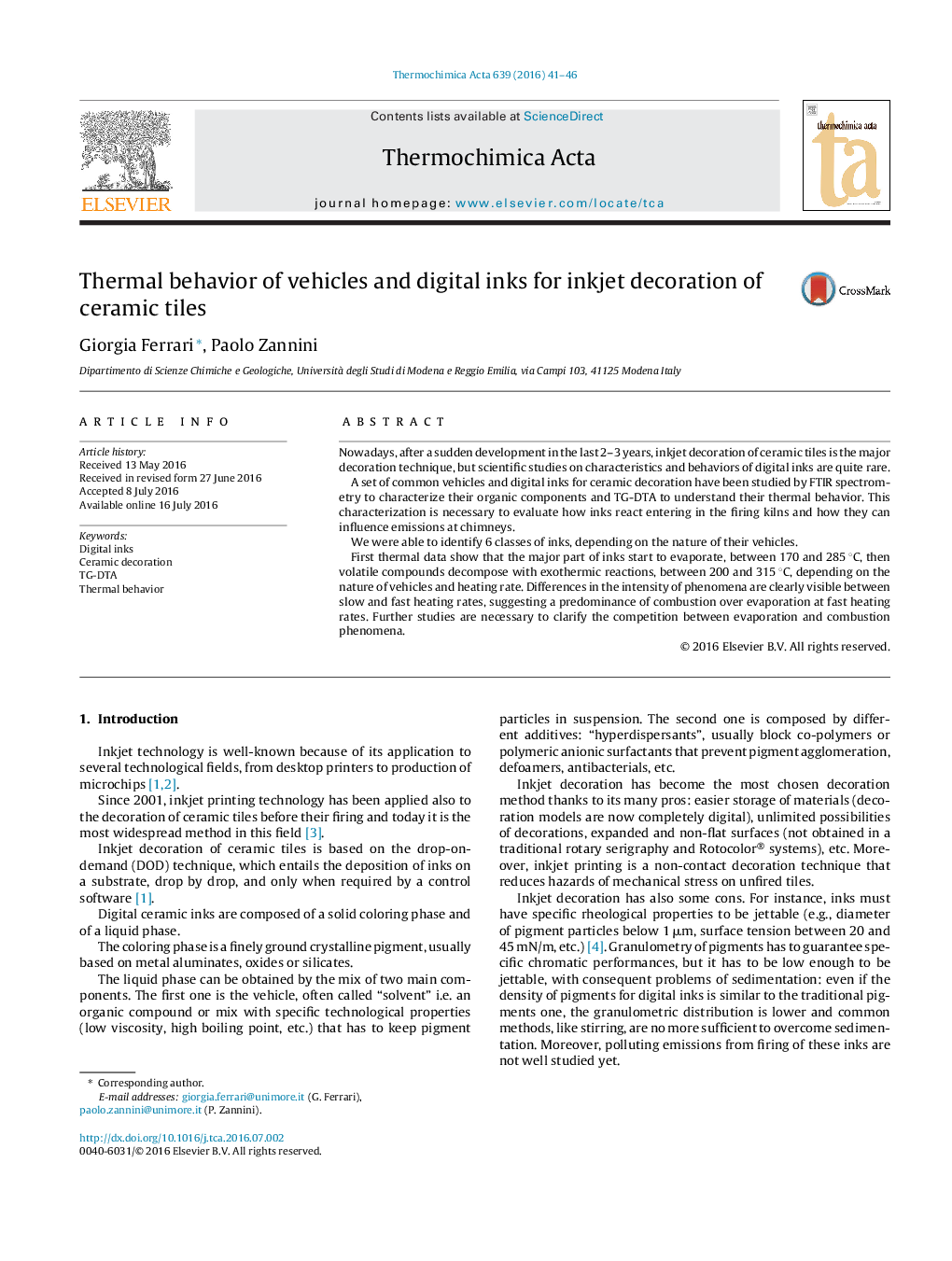| کد مقاله | کد نشریه | سال انتشار | مقاله انگلیسی | نسخه تمام متن |
|---|---|---|---|---|
| 672651 | 1459447 | 2016 | 6 صفحه PDF | دانلود رایگان |
• TG-DTA study of vehicles and digital inks.
• Confrontation between slow heating and industrial-like heating rates.
• Vehicles leave inks by evaporation then volatile compounds decompose by combustion.
• . At fast heating rate, combustion phenomena prevail over evaporation.
Nowadays, after a sudden development in the last 2–3 years, inkjet decoration of ceramic tiles is the major decoration technique, but scientific studies on characteristics and behaviors of digital inks are quite rare.A set of common vehicles and digital inks for ceramic decoration have been studied by FTIR spectrometry to characterize their organic components and TG-DTA to understand their thermal behavior. This characterization is necessary to evaluate how inks react entering in the firing kilns and how they can influence emissions at chimneys.We were able to identify 6 classes of inks, depending on the nature of their vehicles.First thermal data show that the major part of inks start to evaporate, between 170 and 285 °C, then volatile compounds decompose with exothermic reactions, between 200 and 315 °C, depending on the nature of vehicles and heating rate. Differences in the intensity of phenomena are clearly visible between slow and fast heating rates, suggesting a predominance of combustion over evaporation at fast heating rates. Further studies are necessary to clarify the competition between evaporation and combustion phenomena.
Journal: Thermochimica Acta - Volume 639, 10 September 2016, Pages 41–46
